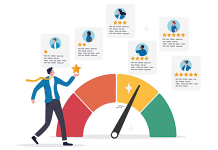Hybrid events, whether you like them or not, are here for good.
There is ample evidence that screen fatigue is real. And, in “you don’t know what you’ve got ’til it’s gone” fashion, marketers and salespeople are eager to return to face-to-face interactions. Buyers may be slightly less enthused about returning to in-person presentations, but most would also likely agree that in-person meetings lead to smarter, more confident buying decisions.
Still, the COVID-19 pandemic forced the B2B world to pivot to interacting through video calls and other digital means, and the general consensus is there’s no going back — not completely, anyway.
Virtual Learning Curve
Many businesses utilized webinars and other online interaction prior to the pandemic. The total shutdown of business travel accelerated the learning curve for how to effectively present virtually. Now, as B2B marketing departments emerge from lockdown, they should have a better handle on which projects can remain virtual, which will be more effective in person, and which should get a hybrid treatment.
Eric Holmen, CEO of Splash, a provider of event marketing software for live and virtual events, said his clients instantly realized during the pandemic the force multiplier capability of virtual presentation tools in terms of sheer audience numbers. Splash clients pivoted from intimate in-person marketing events with 50 or fewer people to online presentations with 3,000 or more registrants.
As a general rule, Holmen said, in-person attendees are more likely to show up, and they are more engaged when they are present. During a 30-day period this summer, when Splash clients were holding both in-person and online events, over 66% of registrants for in-person events checked in compared to 39.5% of registrants for virtual presentations. The virtual events drew larger audiences because more people registered.
Marketers have used a heavy dose of trial and error in the past year and a half to pinpoint what works with virtual presentations. Tech skills that were learned and honed during the pandemic will be beneficial as more live and hybrid events are added to companies’ marketing mix. This includes using tools that allow for more personalized event promotion and invites, improve targeting of prospective attendees, and produce more informative post-event follow-up.
“A lot of should-haves that weren’t practiced that often pre- pandemic became must-haves when virtual presentations became a necessity,” Holmen said. “[Event sponsors] see how much better their ROI is when they take the time to use the digital marketing muscle that can transform event marketing.”
Splash’s event management software connects to existing CRM systems to track an event’s impact on the sales pipeline and facilitate more precise ROI measurement.





